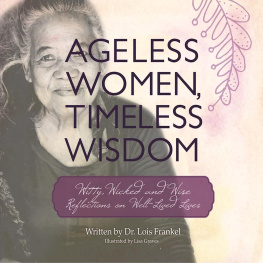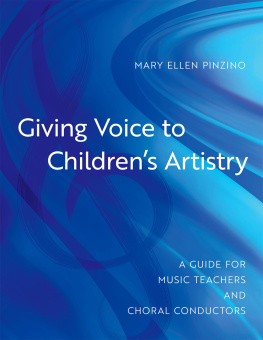GETTING STARTED
CREATING A CULTURE OF ADVOCACY
SECTION OBJECTIVES
For you to be clear on:
the way in which advocacy is being defined what is a culture of advocacy?
how children are to be positioned in relation to advocacy
the framework to be used to help you create a culture of advocacy.
The aim of this book is simple. To provide you with a foundation through which you can establish a culture of advocacy within your organisation, home or indeed any setting that you share with children.
A culture of advocacy is reflected in a setting in which:
childrens voices are acknowledged and valued
opportunities are created to make sure that childrens voices are heard.
Advocacy, in this context, is driven by the value that childrens voices can bring to each and every setting that they experience, whether that is a home or school, a restaurant or courtroom, a playground or shopping mall.
By creating a culture of advocacy you will unlock childrens potential to constructively contribute to the spaces that form part of their everyday lives.
A culture of advocacy sees adults and children working together to create shared spaces. It is relevant to adults whether they engage with children directly or indirectly, in formal or informal settings. A culture of advocacy moves beyond a traditional approach that is driven by adults speaking out for and on behalf of the child. Here childrens voices are recognised for the contribution that they offer to improving practices and outcomes, as adults and children come together to positively transform key spaces within society, offering the opportunity to change their experiences and our experiences (as adults) too!
INTRODUCING ADVOCACY
Embracing a culture of advocacy can have a transformative impact.
Here are some quotes from children who were part of a pupil parliament in their primary school. They had been asked about the value of their parliament:
I dont know how to explain it but its a good opportunity to let me know that I have a voice.
You can say what you think and it can be in consideration for changes.
It helps everyone know how school is and helps make it more better.
Its a good thing because other children get to make ideas instead of the teachers having the ideas.
I think it is a good idea because if youre shy you get a turn to actually speak.
The opportunity to have a voice is valuable. This book will suggest that, through encouraging childrens participation and engagement, a culture of advocacy has positive implications both for the individual and for those many and varied community settings that children and adults share.
This book seeks to offer support to adults who are keen to pursue change through harnessing the potential of childrens involvement and contributions. This book is not about demanding that only children have the answers. However, it does suggest that adults, alone, do not. To embrace that benefit and give transformation a real chance we need to create a new culture of advocacy, where opportunities for children to talk and be heard are both real and valued.
A desire to engage with childrens voices changes the way in which spaces come to be experienced, wherever they may be. How we as adults come to recognise the possibilities of this, and the potential that it offers society, is an important challenge that we must engage with. For example, if we were better at hearing and acting on childrens thoughts and ideas, how would that change the experience of going out for a family meal, or of how children are positioned in formal legal settings, through to their place in schools and at home? A culture of advocacy offers a chance to create a truly shared space that is co-constructed and as a result is one where children experience a sense of purpose and belonging and which offers a basis for effective relationships and personal learning (in its broadest sense).
Each step that follows and the related actions offer a guide to implementing a culture of advocacy. These ideas will allow you to test and evaluate a culture of advocacy in those settings where you engage with children and from this to build and shape a dynamic arena for interaction full of potential benefits for both adults and children.
APPROACHING ADVOCACY
Are you an advocate for children?
I am an advocate, wrote prolific English writer Sir John Mortimer (1998, p.59). Creator of the enduring character Rumpole of the Bailey, Sir John Mortimer had good reason to call himself an advocate. He was a lawyer. Indeed his musings on the role of an advocate reflected the techniques and skills that might be used in the formal setting of a courtroom. At one point in his autobiography he highlights the extent to which the advocate becomes a go-between, an interpreterbetween judgesand clientsin a reasonably short time I became bilingual and able to speak both judge and client and I formed a sort of glossary of useful phrases with their translations ( Mortimer 1998, p. 111). It reflects a particular approach to advocacy. The advocate, who, through their training, is recognised as being best placed to represent the needs and wants of a particular group, taking their voice and re-configuring this for the ears of a decision-maker in a defined setting.
The example above offers a hierarchical model of advocacy, framed and shaped within the context of social institutions (here the legal system). It reflects a version of advocacy that illustrates the traditional way in which children have been positioned. Children here are the group whose needs and wants require translation and interpretation; their wants, as a result of some lack, are presented to the wider world of adults by a qualified advocate. This advocate, thanks to specific training, is assumed to be able to understand the child and therefore offer an accepted version of the childs voice.
However, should advocacy with children be based on little more than adults assuming their ability to effectively impersonate the voice of the child?
The purpose of this book is to question how we see advocacy and its relationship to children. This will mean questioning the role of the adult as advocate on behalf of the child. Indeed, as we explore that role further, it will become clear that adults do have a significant part to play in advocacy with children. This role might involve interpreting and translating, but it is more about creating opportunities, such that children have the confidence to share their voice in the first place, which may then lead to their further participation.
The point here is that adults are important. However, as we seek to engage with a culture of advocacy we need to recognise that it is not good enough to simply assume the voice of the child. In practice the experience and training of the adult needs to be driven more by a desire to unlock childrens voices, as the adult as a facilitator creates platforms that allows the child to be heard. This book reflects the need for a true partnership where adults and children are able to combine knowledge, experience, perspectives and ideas in shaping the spaces that they share.
DEFINING ADVOCACY
Advocacy can certainly be put into the category of a contested concept (Robinson 2015). It is one of those words that has a multitude of uses and meanings. It is, therefore, important to define how advocacy is going to be interpreted in this book as a first step in presenting a meaning that can have real application in the context of childrens everyday lives.













